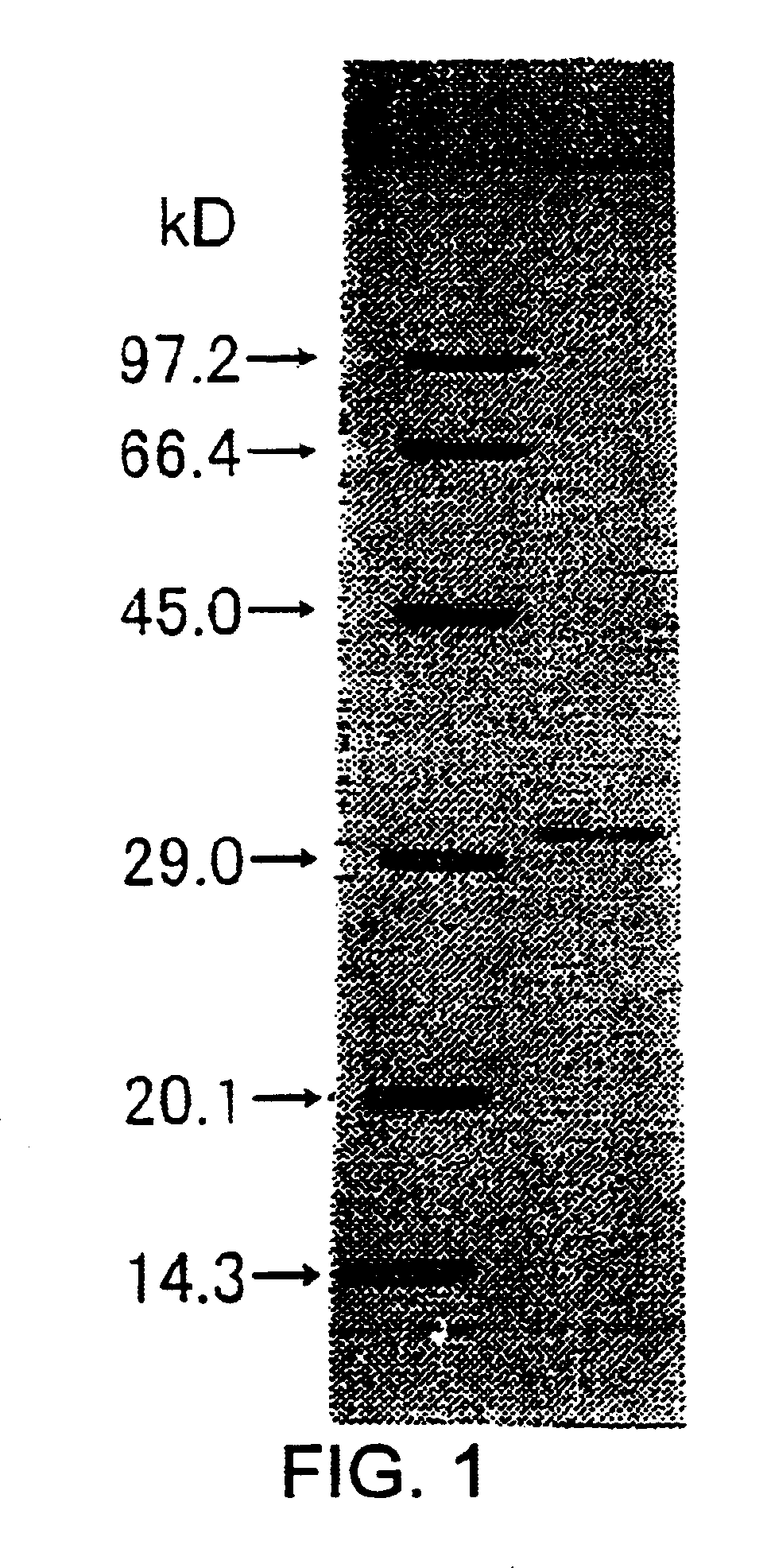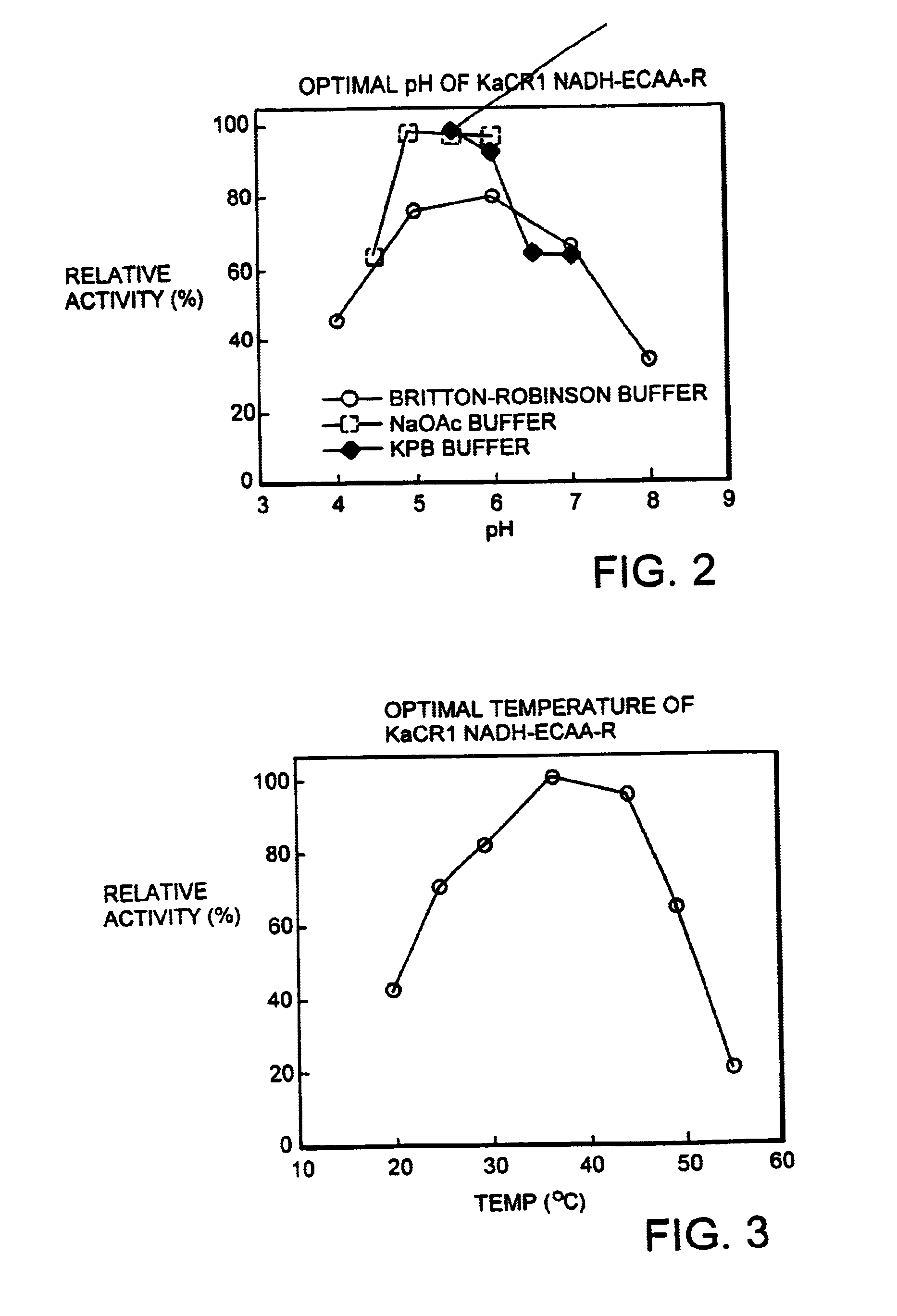Carbonyl reductase, method for producing said enzyme, DNA encoding said enzyme, and method for producing alcohol using said enzyme
a technology of s-4-halo-3-hydroxybutyrate ester and carbonyl reductase, which is applied in the field of carbonyl reductase, can solve the problems of low optical purity and yield of product, industrial disadvantage of the method for synthesizing s-4-halo-3-hydroxybutyrate ester using these enzymes, and achieve excellent stereoselectivity , high optical purity, the effect of high yield
- Summary
- Abstract
- Description
- Claims
- Application Information
AI Technical Summary
Benefits of technology
Problems solved by technology
Method used
Image
Examples
example 1
Purification of Carbonyl Reductase
[0166]Kluyveromyces aestuarii IFO 10597 was cultured in 20 L of YM medium containing 24 g / L glucose, 3 g / L yeast extract, 3 g / L malt extract, and 5 g / L peptone (pH 6.0). The cultured cells were harvested by centrifugation. The wet cells thus obtained were suspended in 50 mM potassium phosphate buffer (pH 8.0) containing 0.02% 2-mercaptoethanol and 2 mM phenylmethanesulfonyl fluoride (PMSF). The suspended cells were disrupted with a bead beater (BioSpec Co.), then cell debris was removed by centrifugation to obtain cell-free extracts. After protamine sulfate was added to the thus-obtained cell-free extract, the mixture was centrifuged to obtain a nucleic acid-free supernatant. The supernatant was adjusted to 25% saturation with ammonium sulfate and was applied to a phenyl-Toyopearl 650M column (5.0 cm×27 cm) equilibrated with a standard buffer (10 mM potassium phosphate buffer (pH 8.0), 0.01% 2-mercaptoehanol) containing 25% ammonium sulfate. Elution...
example 2
Molecular Weight of Carbonyl Reductase
[0174]The molecular weight of the subunit of the enzyme obtained in Example 1 was determined to be 32 kDa by SDS-PAGE. The molecular weight determined by gel filtration using Superdex G200 was approximately 85 kDa.
example 3
Optimal pH of the Carbonyl Reductase
[0175]The relative reductase activity of the enzyme obtained in Example 1 to ethyl 4-chloroacetoacetate was investigated with varying pH values of the reaction solution using the potassium phosphate buffer, the sodium acetate buffer, and the Britton-Robinson buffer. The results are shown in FIG. 2 as activity relative to the maximum activity that is regarded as 100. The optimal pH of the reaction was estimated to be pH 5.0 to 6.0.
PUM
| Property | Measurement | Unit |
|---|---|---|
| molecular weight | aaaaa | aaaaa |
| molar ratio | aaaaa | aaaaa |
| molar ratio | aaaaa | aaaaa |
Abstract
Description
Claims
Application Information
 Login to View More
Login to View More - R&D
- Intellectual Property
- Life Sciences
- Materials
- Tech Scout
- Unparalleled Data Quality
- Higher Quality Content
- 60% Fewer Hallucinations
Browse by: Latest US Patents, China's latest patents, Technical Efficacy Thesaurus, Application Domain, Technology Topic, Popular Technical Reports.
© 2025 PatSnap. All rights reserved.Legal|Privacy policy|Modern Slavery Act Transparency Statement|Sitemap|About US| Contact US: help@patsnap.com



